All kinds of shahsavan jajims
Shahsavan Jajim/Moghan =Various geometric motifs of ancient origins animates the vertical stripes of this sober Jajim. Among the motifs is the easily-recognised “Padlock” design, which is alternated here with cruciform Persian carpet and triangolar-shaped motifs. The stylised representation of a knife is unique. Strangely, the motifs in one stripe are incomplete. All kinds of shahsavan jajims.
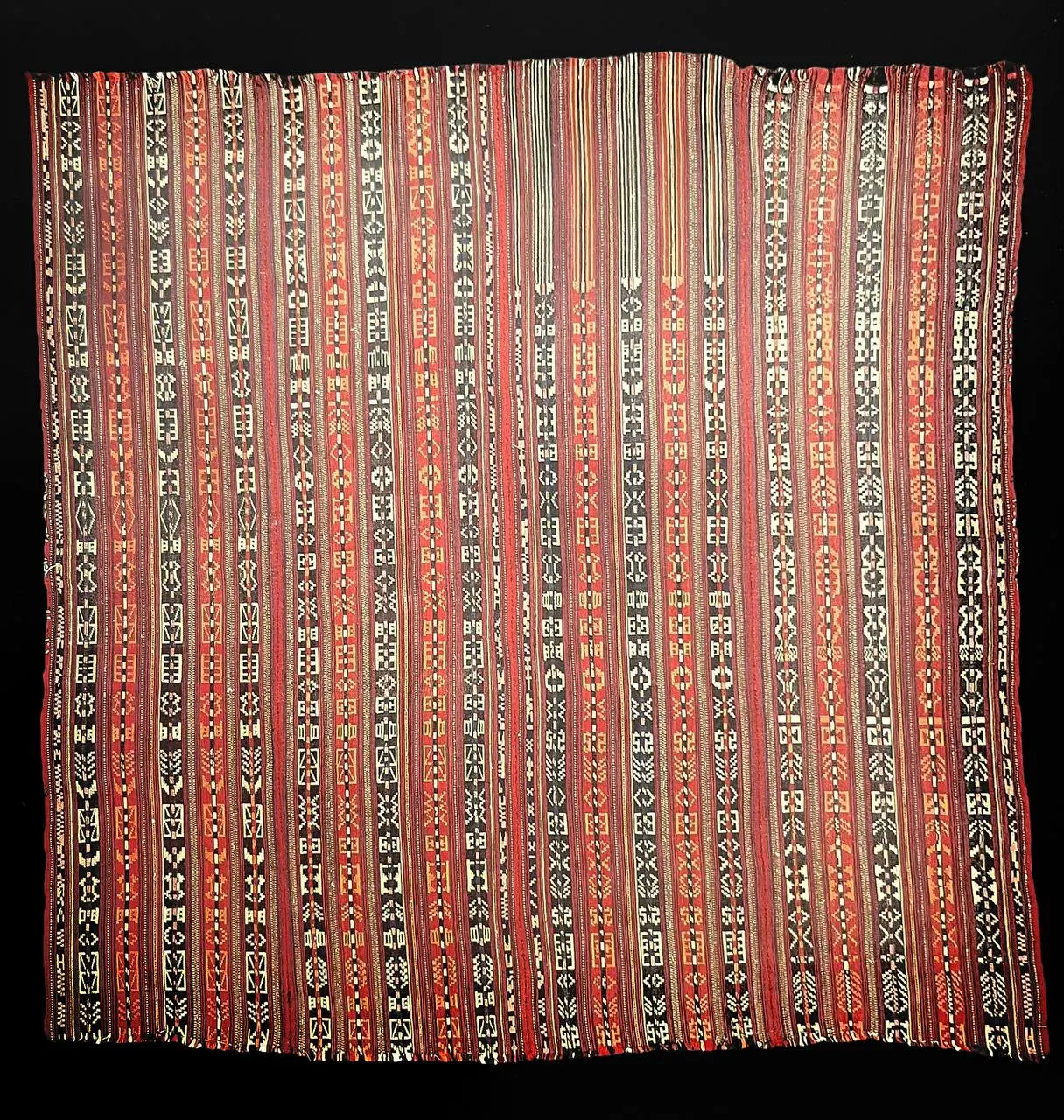
Shahsavan Jajim / Moghan
The weavers have used a vast repertoire of designs to decorate the stripes of this jajim. Some of the motifs are inspired by plants (buds and flowering stems), others are geometric. Others are borrowed from everyday life, such as the comb motifs. Some stripes are decorated with thin, like shapes and lively, human figures wearing skirts.
*Click on the opposite link to see precious Iranian handmade and machine combined silk carpets*
Shahsavan Jajim / Qaradagh
The tiny geometric motifs, which make up the decorations on the stripes, are laid out
symmetrically along an axis. The weavers have sometimes substituted the tiny “bracket” motifs,
which are arranged vertically along each stripe, with serpentine or arrowhead designs. All kinds of shahsavan jajims
Shahsavan Jajim / Qaradagh
The designs are symmetrically arranged in columns on either side of a central axis. Among them
are “bracket”-shaped motifs which converge along the axis to form small, rounded medallions
and geometrical butterfly shapes. There are also stylized dragons, combs and hook-shaped motifs. persian Handmade carpet
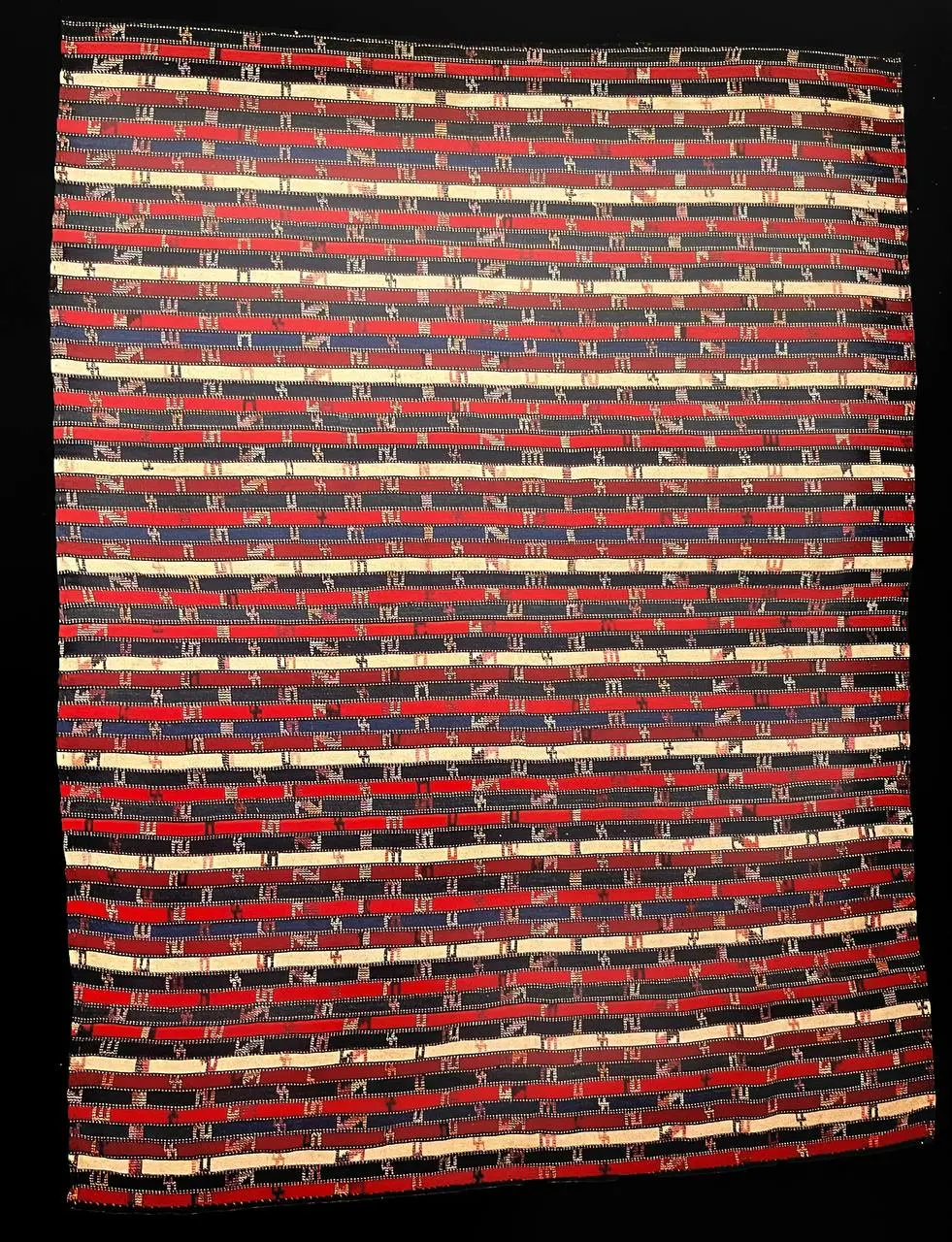
Shahsavan Jajim / Talesh
The Jajim opposite is among the simplest, though it acquires charm thanks to the liveliness of
its colours and the harmonious manner they are arranged in. The weavers have given the effect
of movement and depth to each of the coloured stripes by arranging the warps of each colour in
gradation: from the lightest to the darkest. All kinds of shahsavan jajims
Shahsavan Jajim / Moghan
The seem inly irregular rhythm of the colours is actually due to wear. The Jajim has been cut and
reduced in size, perhaps to eliminate the most worn areas. The careless repairs are a contrast to the fine weaving and the perfection of the original seams. They also affect the careful placing of the colours which was designed to set off the natural, white wool against the soft gradation of pinky-reds. Silk carpet
Shahsavan Jajim / Moghan
The originality of this particular piece lies in the fact that it is made of four identical strips of
cloth, both in their size and in the sequence of the colours. The weavers have added a fifth strip with a different design. The technical characteristics, and the homogeneity of the threads rule out the theory that it was a later addition. All kinds of shahsavan jajims
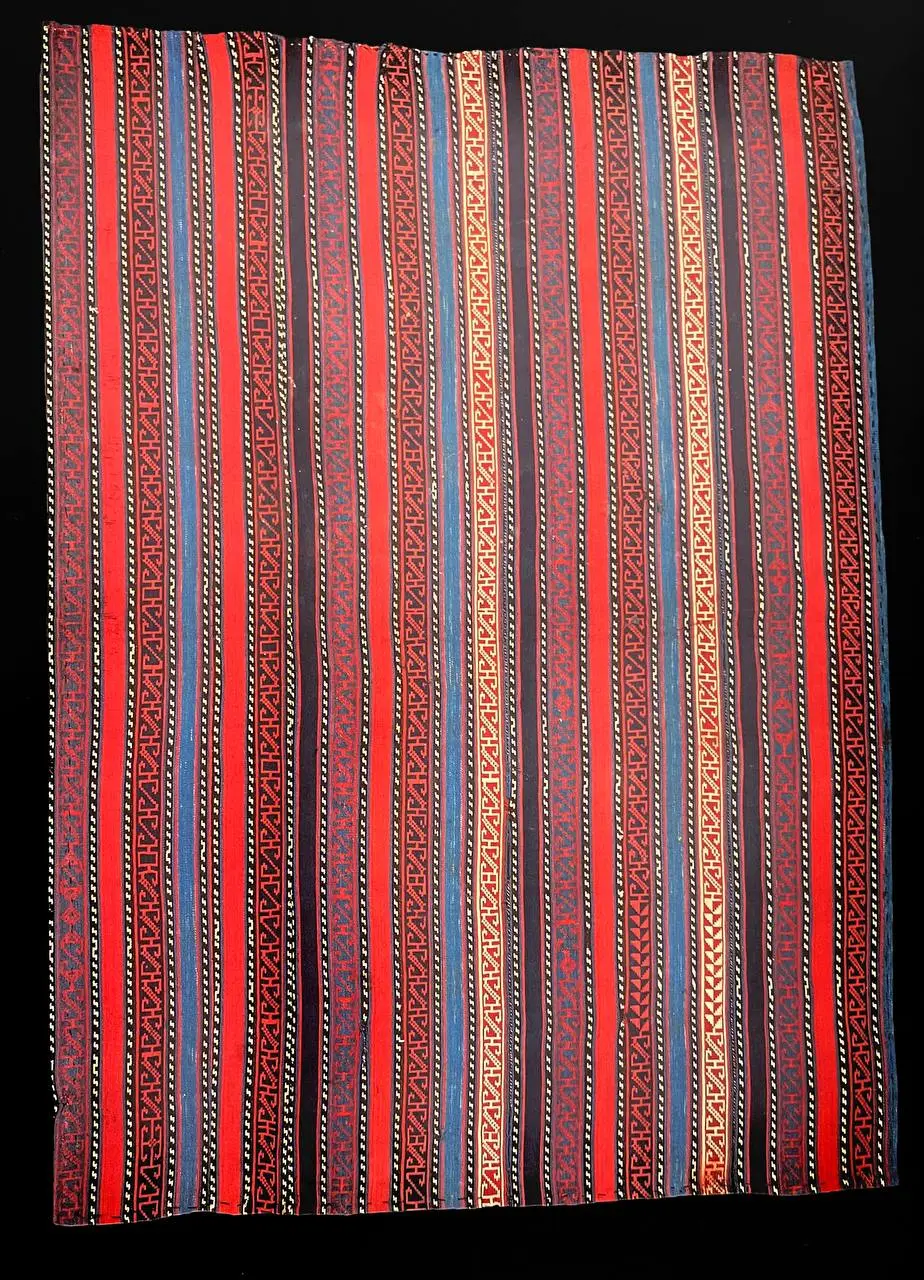
Shahsavan Jajim / Zanja
Even the simplest of jajims, like the one shown here, show the weavers’ creativity. The black stripes are animated by the gradation of colours. The seams are enlivened by the use of contrasting, coloured wool. In some places, decorative wefts have been inserted between the warps, to form strange, perhaps graphic, symbols. All kinds of shahsavan jajims
Shahsavan Jajim / Moghan
The device of edging wider stripes with thin lines of contrasting colours creates movement, even
in a very simple design such as this . Although this jajim has a very limited range of colours, and
the threads are not finely spun, the weavers have managed to produce a piece that is pleasing
evocative.
Shahsavan Jajim / Moghan
Lively, bright colours, glossy wool and particularly fine workmanship make this simple jajim
a refined example, which shows the ability of its weavers. The fine, black stripes separating the
multicoloured bands bring out the contrast of the colours.
Shahsavan Jajim / Moghan
The simplest jajims, those without any designs on them, are made for a wide range of everyday
uses. The example opposite is composed of many, narrow strips and was probably made on a very small loom. The colours, which have been placed with liveliness and freshness give this jajimn its charm.
Shahsavan Jajim / Hashtroud
The warp-substitution technique creates the most traditional of designs: the trefoil medakhyl. It is commonly found on the carpets and kilims of Azerbaijan, though it is extremely rare on jajim. The small serpentine designs on the narrowest stripes are original and interesting. Innovative return to old carpets in Iran
Shahsavan Jajim / Moghan
The weavers have alternated plain stripes, enlivened with light and dark colours, with stripes
decorated with a tiny grill design achieved by alternating the warps. The designs on one of the panels are unfinished. This characteristic has been found on other jajim and is perhaps intentional.
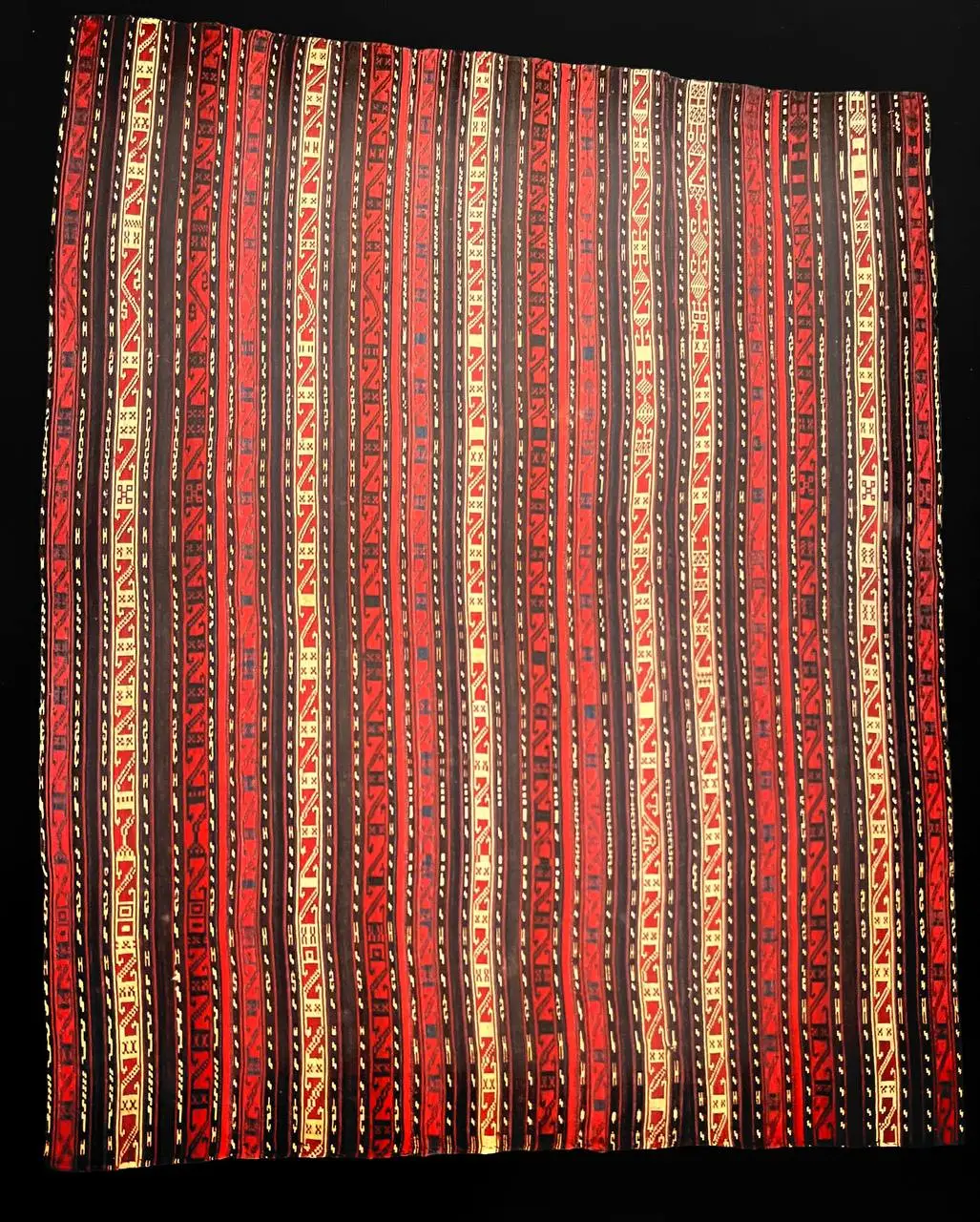
Shahsavan Jajim/ Talesh
This sumptuous jajim is entirely made of silk. The vibrant tones of its colours, largely derived from the use of synthetic dyes, have made it rather gaudy. Although silk jajims are quite common among the nomadic people, they are usually decorated with plain stripes and it is rare to find examples with decorated stripes, as shown here.
Shahsavan Jajim / Saveh
This jajim has a rich and interestingg range of decoration. A geometrical flowering vine design is
alternated with snake-like motifs and tiny stylized human figured. The regular rows of silk tufts are one of the characteristic ornaments believed to be talismans.
Shahsavan Jajim/ Talesh
The simple monochrome stripes of alternating colours are made brighter by the shiene of the silk. These stripes are placed between bands with more complex decoration. Here the weavers have alternated the colours of the warps on the front of the jajim, creating a geometrical sequence of octagons. Two decorative warps at a time have been passed over the three wefts under a fourth, alternately. All kinds of shahsavan jajims
Shahsavan Jajim / Moghan
The complex weaving techniques used here allow the production of tiny desogns, which are
organized on diagonal lines to form lozenges and trelliswork. Among nomads of Turkish orngin, the rhombus and the lozenge are the most common good-luck designs. Here they appear in arious forms and colours.
Shahsavan Jajim/ Hashtroud
The exceptionally fine threads and outstanding technical expertise have enabled the weavers to
decorate some of the wider stripes with fine, trellis designs, enlivened bya range of colours. The
choice of light and bright red and blue, have added to the attraction of this extraordinary piece. Historical changes styles of Persian carpet
Shahsavan Jajim/ Hashtroud
The lines of geometrical designs on this evocative jajim are similar to those found on the oldest
ceramics of the Iranian plateau. The principal motif, known as the ‘padlock” design, is alternated with stylized humanoid figures. All kinds of shahsavan jajims
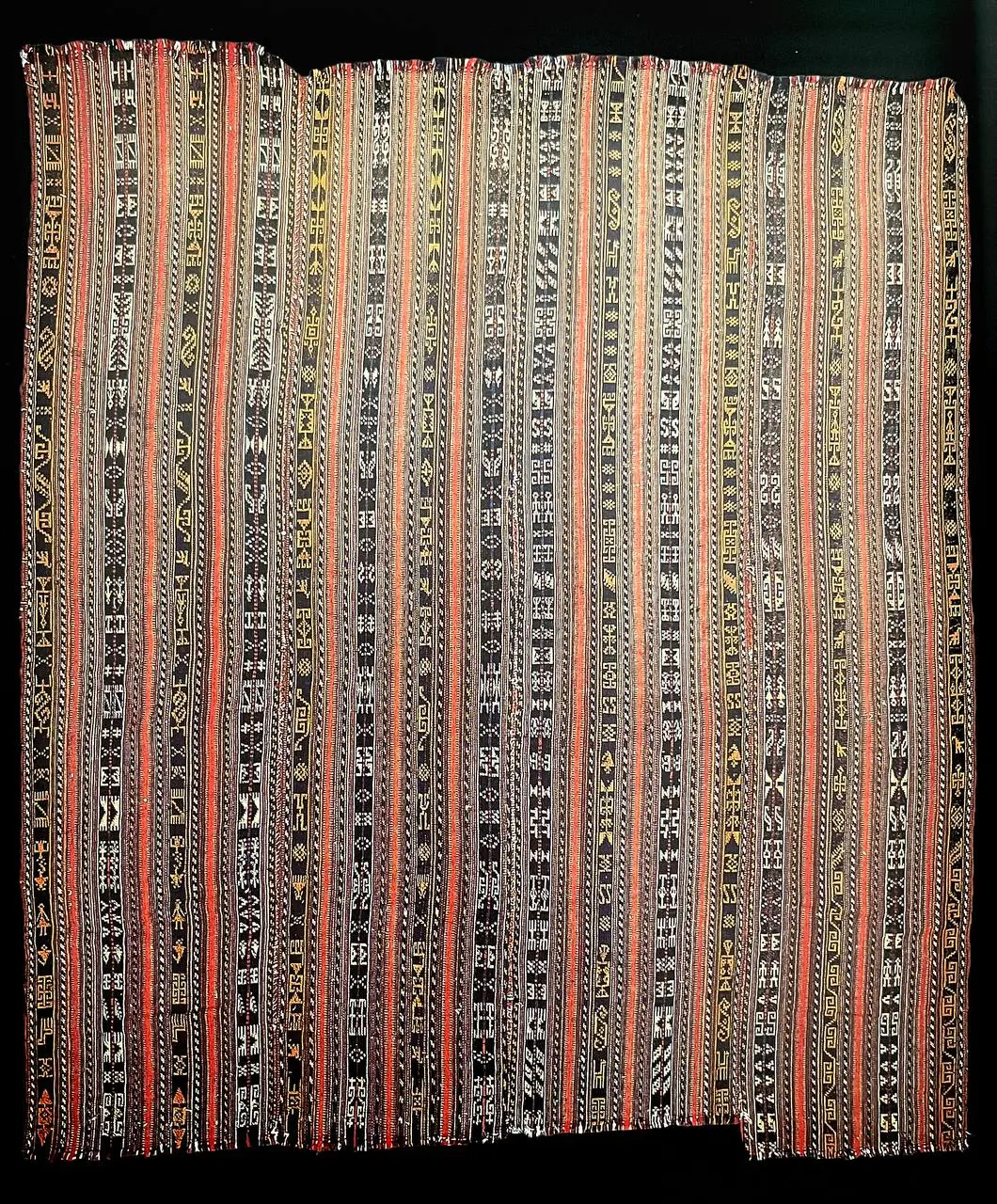
Shahsavan Jajim
This shows an unusual decorative technique. This simple vertical stripes are enlivened by the zigzag pattern and the rectangles, which are made with multicoloured decorative wefts inserted between the Warp at the ratio of approximately 5/1. The wefts are left free on the back to form small tufts. The end with their long fronges are also interesting.
Shahsavan Jajim / Takab
The weavers have alternated plain stripes, enlivened with light and dark colours, with stripes
decorated with a tiny grill design achieved by alternating the warps. The designs on one of the panels are unfinished. Thís characteristic has been found on other jajim and is perhaps intentional.
Shahsavan Jajim / Moghan
Refined and elegantly-made, the jajim illustrated here has alternating, monochrome and richly-
decorated stripes. The motifs are irregularly placed, and all have an amuletic significance. The motifs include diamonds, S-shaped snakes and most important, the “padlock” design believed to have been originally inspired by human form.
Shahsavan Jajim / Zanjan
The use of very fine and exceptionally soft wool makes this jajim distinctive. This large cloth is
dominated by the red tones with an abrash veining. A few stripes are enlivened with a milticoloured weave, obtained by alternating the warps. Persian carpet designs
Shahsavan Jajim / Khalkhal
Fine, lustrous silk warps and an unusual juxtaposition of colour are the principal elements in this refined jajim. The contrast in the bands of colour is underpinned by the presence offive and seven thin stripes, which are placed between them. The central stripes has been woven using a warp-substitution technique. All kinds of shahsavan jajims.
Shahsavan Jajim / Moghan
A finely-made jajim whose bright colours, dominated by the luminosity of the yellow, form the
basis for tiny, conventional, geometrical motifs; some of which were originally inspired by plants. Among these, the weavers have placed minute human figures with large eyes, in group of three, and small animal motifs.
Shahsavan Jajim / Hashtroud
The stripes on this jajim are organized in groups of three, in blue or shades of red. The motifs on
the decorated stripes alternate between combs, amulets, petals, leaves and vaguely-sketched humanoid fugures. The apparent randomness of the decorative sequence is contrasted by the regular regular rhythm of the colours. Town carpets
Shahsavan Jajim /Khalkhal
A very soft and extremely fine silk jajim. The principal elements are the juxtaposition of white
and mauve. The bi-coloured stripes are woven with the warp-substitution technique, which separate the two colours, underpinning their contrast. The seam between the panels are highlighted by the juxtaposition of two purple stripes.
Shahsavan Jajim / Hashtroud
The gradation of the colours, dominated by the red tones which range from amaranth to coral,
enliven the sober and regular decoration on this jajim. Simple geometrical designs, such as half moons and stylized corolla, have been placed alongside a vine motif.
Shahsavan Jajim / Hamamlu
Warps of heavy silk have been precisely woven to compose a rich and lively decoration. The stripes are of various widths. The colours are soft and warm with many abrash. The wefts, which are also in red silk, give the cloth an extraordinary softness. Where the wefts show through the warp an effect of shot silk is achieved.
Shahsavan Jajim / Moghan
The tiny motifs which decorate this jajim are conventionally described as “graphic signs”, but they are really a stylized version of complex figures. Among these motifs, it is possible to distinguish snake- like designs similar to the traditional depiction of the dragon, and geometrical human figures.
Shahsavan Jajim / Khalkhal
The sequence of colours, which repeat themselves regularly in each panel, alternate dark and light tones. Their uniformity is broken up by the interplay of shades. Thin, vertical stripes, sometimes bi-coloured and grouped in threes and fives, (produced with the warp-substitution technique) highlight the flow between one colour and another.
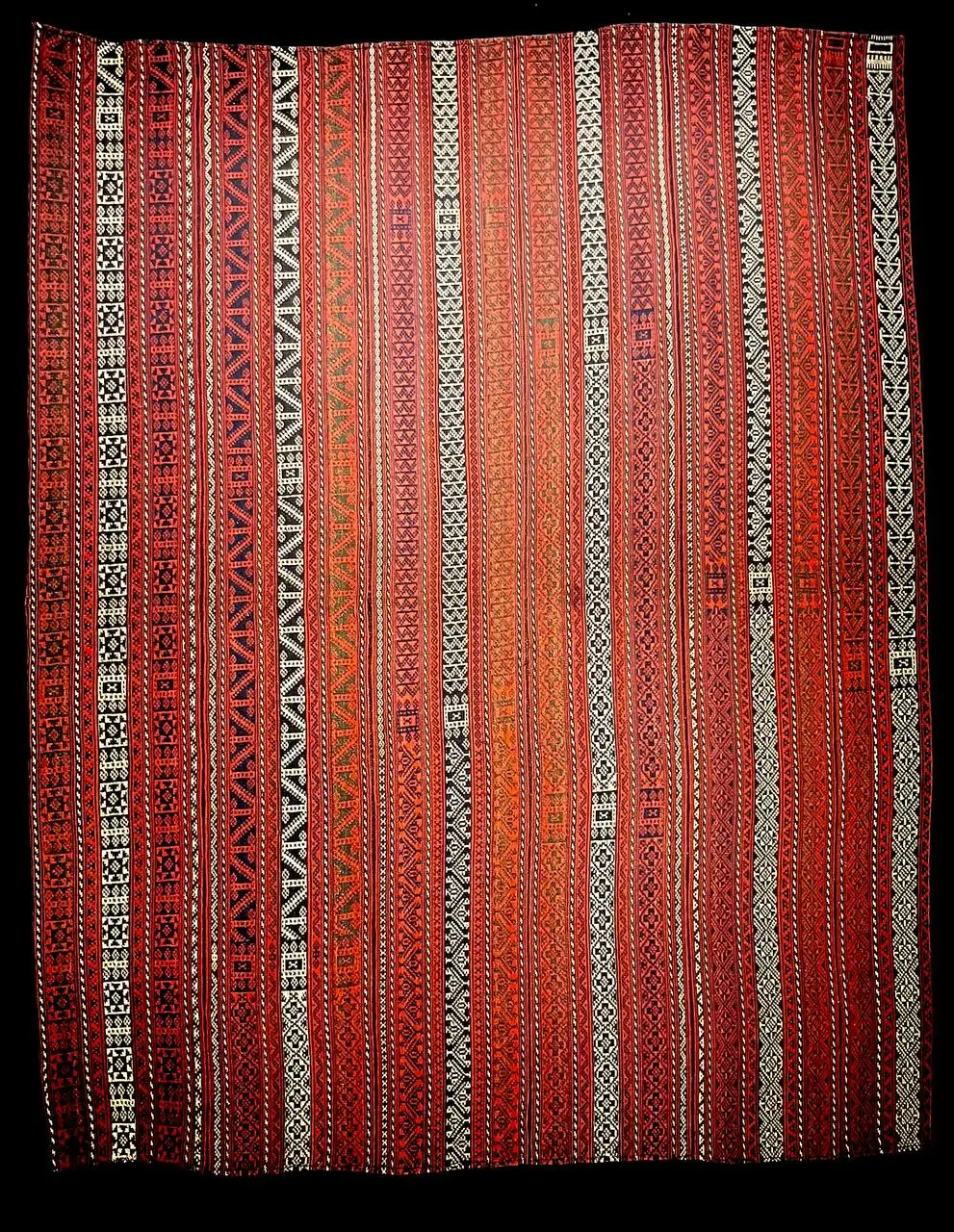
Shahsavan Jajim / Moghan
Among the characteristic decorations found on a jajim, are small geometrical motifs in various
shapes. They are often similar to graphic signs and are laid out symmetrically along an axis. These characteristics are present on this jajim though it is unusual as the motifs on one stripe are unfinished.
Shahsavan Jajim / Moghan
Very few jajims contain so many and such original motifs. Many are linked to ancient symbology: animals placed face-to-face against a stylized crescent moon and human figures, placed side-by-side or enclosed in a frame, perhaps to represent the ideal home. There are also various versions of amulets and sun eagles.
Shahsavan Jajim / Moghan
The decorative technique used in this jajim is interesting in that it is reminiscent of Kurdish weaving. Decorative wefts in silk have been inserted between the warps: passing over 4 or 5 warps and under one (these are invisible on the back). Thus creating tiny S-shapes, lozenges and swastikas. Style and maktab of Persian carpet
Shahsavan Jajim / Hashtroud
The alternating shades of red and blue enliven this jajim, setting off the refined vine pattern, derived from a sinuous S-shaped design. In one of the panels, the S sequence has been interrupted by a series of arrowhead motifs, respecting the nomadic custom of never making a jajim too uniform.
Shahsavan Jajim / Moghan
Squares, which may be interpreted as amulets, joined together by a zigzagging line, are the main
decorations on this jajim. A serpentine design decorates the narrowest stripes.
Shahsavan Jajim / Moghan
An interesting jajim, whose panels do not give an overall homogenous design. The designs on
some of the vertical stripes change suddenly: a stylized bud motifis substituted by a diamond. Double V designs become cross-shaped buds. A stylized amulet, heavy with pendants, precedes the chang in design. Pazyryk carpe
Shahsavan Jajim / Moghan
Evocative designs adorn the three main stripes on the central panel. They are a stylized version
of the symbolic eagle motif. Lord of light, it is often shown in combat with the snake, symbol of the dark forces. The eagle is a traditional motif of Shahsavan flat weaving and is shown with its wings outstretched with beak and claws visible.
Shahsavan Jajim / Moghan
Panels with the traditional amuletic design, common on jajims, are alternate here with paneis
decorated with a rigid vine design. This could be interpreted as an extreme stylization of the sun eagle design. Origins of Persian carpet
Shahsavan Jajim / Moghan
The complex and rich design on this jajim, common on Shahsavan textiles, is known as yeddi
qardash “the seven brothers”. The alternating motifs are believed to bring good luck: large S shapes, often reminiscent of stylized snakes and squares embellished with pendants.
Shahsavan Jajim / Moghan
The characteristic yeddi qardash has been used on this jajim in a rich and precise manner. In the
Widest stripes, the traditional S shape and the square motif with pendants similar to amulets, wind Tom one to the other. One corner has been damaged and repaired with a fragment from another jajim.

Shahsavan Jajim / Moghan
The jajim opposite brings together a wide range of the most classic Shahsavan designs: the stylized eagle, with its wings outstretched is here transformed into a Greck zigzag pattern. Diamonds and lozenges alternate around triangular-shaped amulets with tiny pendants. The two stripes ofa different colour each contain two highly-stylised male figures.
